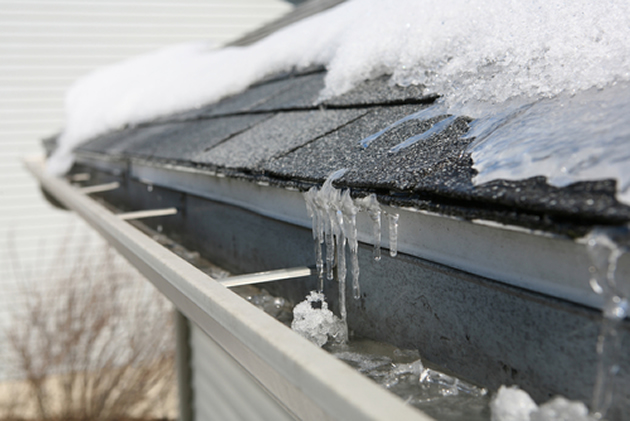
If you walk around any Calgary neighbourhood during the winter, you’ll probably be able to spot a few houses with an ice dam. They’re the ones with patches of exposed shingles on an otherwise snow covered roof, a thick buildup of ice around the eaves, and sometimes a lot of icicles.
An ice dam forms when a warm attic causes snow on the roof to melt. The melt water runs down the roof and when it hits the cold roof deck near the eaves, it freezes. As more snow on the roof melts, the ice dam gets thicker. Water starts to pool behind the ice dam and it can stay liquid if it’s on a warm part of the roof. Eventually that water begins to work its way into the attic and walls through cracks in the shingles and nail holes. If it goes undetected, water can continue to trickle into the attic, creating a warm moist environment that’s ideal for mould growth.
In order for an ice dam to form, part of a snow covered roof must be above 0 degrees C. Outside temperatures and the roof deck around the edges of the roof must be below freezing. Heat can travel from the living areas of a home to the attic through conduction, convection, and radiation. Warm air can also flood an attic through air leaks around light fixtures like pot lights. If the roof deck is warmed above freezing, presto – the snow starts to melt.
Ice dams can be prevented by controlling heat loss. Make sure ceilings in upper levels in your home are air tight. Improve the insulation in ceilings and the attic to prevent the attic from heating up.
Mould and mildew can cause chronic respiratory problems. If you have had ice dams on your roof you should have your attic inspected for mould growth.
Amity Environmental in Calgary specializes in mould inspections and remediation. Contact them today if you’re concerned that mould might be growing in your attic.

